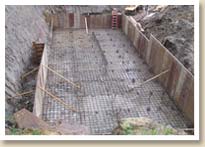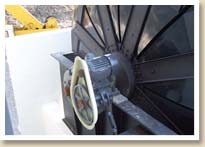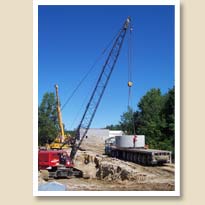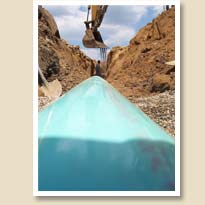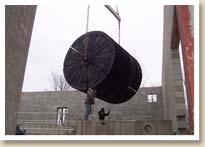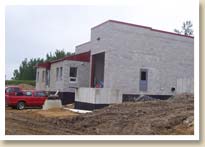Handy Township
Wastewater Treatment Plant
Handy Township was faced with a difficult choice: either construct a public wastewater treatment plant (WWTP) or allow a private developer to construct a small lagoon system to serve their proposed new project. The public WWTP was determined to be most advantageous since it could serve a wider area of potential development, boosting the local economy.
Engineering Technologies Corporation was selected to determine the economic viability of the project, establish a Special Assessment district, assist the project financing, and provide the design, specifications and construction assistance to complete the project.
Since the WWTP would serve an existing rural development, and sanitary flow would be very low at plant start-up, a process design was needed that could handle a large variation in flow. Also, since Handy Township had no previous experience with sanitary sewers or wastewater treatment, a low-maintenance and low- cost-of-operation system would be required. After considering several treatment processes and cost-of-operation alternatives, a modified rotating biological contactor (RBC) process was selected and constructed.
The design features two RBCs as part of the primary settling and treatment stage. The RBCs are contained in a rotary treatment zone constructed partially submerged in the primary settling tanks. The raw sewage is directed longitudinally along the shaft, forcing contact with the rotating media for very efficient removal of BOD and suspended solids.
Since this WWTP is located on a very small branch of the Red Cedar River, the MDEQ imposed strict effluent limits for phosphorus and ammonia. The process incorporated an additional RBC downstream of the secondary settling tanks for ammonia reduction, and passive sand filters for final filtration and removal of the phosphorus with alum. The WWTP features an equalization basin and sludge digesters.
While the ultimate design capacity of the WWTP is 200,000 gallons per day (gpd) the actual flow at startup was less than 1,000 gpd. Over the past few years the flow has grown to over 30,000 gpd and the WWTP has always exceeded its MDEQ effluent water quality requirements at very low operating costs.
